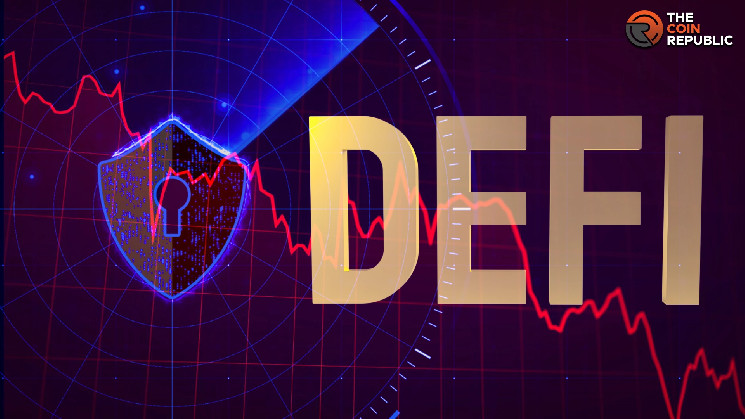
DeFi, once celebrated for its potential to revolutionize finance with transparency and accessibility, faced a grim reality in Q1 2024. Incidents of hacking and fraud resulted in DeFi platforms losing $336 million, casting doubt on its utopian vision.
This figure, a 23.1% decrease from last year, starkly contrasts with the clean record of centralized finance (CeFi) platforms, which reported zero incidents in the same timeframe.
The stark difference between these two approaches prompts a critical examination of the future of decentralized finance.
As DeFi’s capital surpasses $100 Billion, the attraction for malicious actors intensifies. The crucial question arises: can DeFi adapt its security measures to keep pace with rapid innovation, or will its inherent characteristics always leave it vulnerable compared to centralized systems?
The Double-Edged Sword Of Decentralization
DeFi’s fundamental tenets of permissionlessness and openness provide security challenges. These guidelines increase accessibility, transparency, and the possibility of protocol exploitation.
Because DeFi’s code is transparent to anyone, hackers can more easily find vulnerabilities. On the other hand, because traditional financial institutions employ proprietary technology, it is more difficult for hackers to identify weaknesses.
Furthermore, because DeFi is permissionless, anybody can engage with the protocols without consent, encouraging innovation while potentially allowing malevolent actors to exploit faults or add new vulnerabilities.
Innovation vs. Security
The rapid pace of innovation in DeFi often leads to a neglect of security considerations. Unlike CeFi institutions, which prioritize security with audits and strict controls, DeFi platforms focus more on gaining a competitive edge.
This disparity exposes DeFi to greater risk as new protocols and features are introduced without thorough security assessments.
While DeFi teams work to address vulnerabilities after they emerge, they often struggle to keep pace with evolving threats, leaving platforms vulnerable to exploitation.
Forging A Path To Sustainable Security
For DeFi to succeed, a fundamental shift in its security approach is crucial. It must prioritize user protection from the outset, integrating it into every development stage, from smart contract creation to user interface design.
Developers must adopt a new mindset, placing security at the forefront of their operations. It involves investing in regular audits, bug bounty programs, and robust incident response plans, similar to practices in traditional finance.
While new Web3-native security firms offer promise, their solutions must still be tested at scale. Significant improvements in DeFi safety may take time due to trade-offs between decentralization, accessibility, and security.
Ultimately, DeFi platforms must show a genuine commitment to security, recognizing it as a cornerstone of their success and the broader ecosystem.
Conclusion
The DeFi sector suffered significant losses in Q1 2024, emphasizing how urgently security procedures must be reevaluated. The hazards increase as the industry grows, attracting more investors and customers.
DeFi’s permissionless and open-source architecture encourages creativity but also exposes vulnerabilities. Therefore, DeFi platforms must prioritize security measures, invest in robust protocols, and promote user protection.
Achieving success requires striking a balance between security and decentralization. Directly addressing this issue is essential to the DeFi ecosystem’s long-term sustainability and reliability.
By addressing these problems, the DeFi sector may prosper and provide everyone with open, transparent, and safe financial services.
